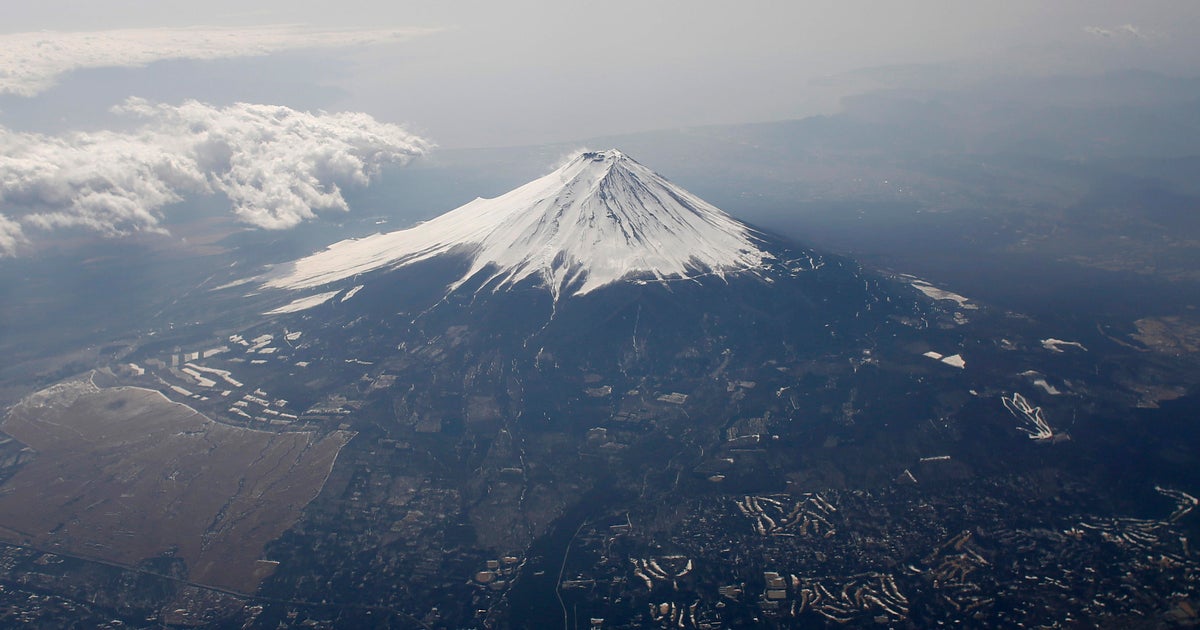South Korea says apparent North Korean hypersonic missile test ends in mid-air explosion
Seoul — North Korea test-fired what appeared to be a hypersonic missile on Wednesday, but the launch ended in a mid-air explosion, an official from Seoul's Joint Chiefs of Staff said. The early morning launch came just hours after Pyongyang sent another flurry of trash-bearing balloons southward, this time forcing a three-hour halt to flights in and out of South Korea's Incheon airport.
The missile took off from an area in or around North Korea's capital Pyongyang at about 5:30 am (4:30 p.m. Eastern on Tuesday) and South Korean and U.S. intelligence agencies were conducting a detailed analysis, Seoul's Joint Chiefs of Staff said in a statement.
The JCS official said the test of what appeared to be a hypersonic missile ended in failure after a journey of some 155 miles. Hypersonic missiles fly so fast that they are able to evade currently available missile defense systems. Russia has used them in Ukraine, and other countries, including the U.S., have been developing hypersonic weapons systems.
The Associated Press reported that South Korea later conducted live-fire drills along its disputed western sea boundary with North Korea.
More smoke than usual appeared to emanate from the missile, raising the possibility of combustion issues, the official said, adding it may have been powered by solid propellants.
Japan also confirmed the launch, with its coast guard saying the missile splashed down in the Sea of Japan, also known as the East Sea.
The test follows North Korea launching hundreds more trash-carrying balloons southward on Monday and Tuesday, the latest in a series of border barrages that have sparked a tit-for-tat propaganda campaign.
Late Wednesday, South Korea's military said the North has again floated another round of trash-carrying balloons southward for the third consecutive day, advising the public to report the balloons if spotted and refrain from touching them.
Seoul's military said the balloons were carrying "mostly paper waste" that posed no safety risk to the public. But the latest batch of North Korean balloons disrupted takeoffs and landings at Incheon International Airport, an official told AFP.
Both domestic and international flight arrivals and departures "were suspended ... from 1:46 am (1246 Eastern) to 4:43 am," an Incheon International Airport Corporation official said.
"At around 4:08 am, it was confirmed that a trash-carrying balloon had fallen near Gate 248 of T2, and military authorities collected it. The airport is operating as normal since 4:44 am," the official added.
Pyongyang has already sent more than a thousand balloons carrying trash in what it says is retaliation for balloons carrying propaganda criticizing leader Kim Jong Un's rule floated north by activists.
In response, Seoul has fully suspended a 2018 tension-reducing military deal and restarted some propaganda broadcasts from loudspeakers along the border.
Late Wednesday, South Korea's military revealed that it scrambled fighter jets the previous day as a Chinese unmanned aerial vehicle entered its air defense zone, an area wider than the country's airspace, and remained around 50 minutes before leaving. Beijing is Pyongyang's most important ally.
South Korea's Marine Corps resumed live-fire exercises on islands near the western inter-Korean border on Wednesday, meanwhile, marking the first such exercises since the 2018 pact with the North was suspended earlier this month over the balloon-borne propaganda.
The exercise, described by South Korean authorities as "routine and defensive in nature," involved Seoul's K239 Chunmoo multiple rocket launcher systems, among other assets, they said.
It fired "approximately 290 rounds at simulated enemy targets to verify their capability and readiness to strongly retaliate against any provocations", the Marine Corps said in a statement.
South Korea and the U.S. also staged joint air drills Wednesday involving around 30 aircraft, including Washington's advanced stealth fighter jet, the F-22 Raptor.
On Tuesday, Yoon visited a U.S. aircraft carrier that arrived in South Korea at the weekend for joint military drills aimed at countering North Korean threats.
The drills, which include Japan, are set to go ahead later this month.
Pyongyang has routinely criticized such exercises as rehearsals for an invasion.
Kim's sister and key government spokeswoman Kim Yo Jong warned this month that Seoul would "undoubtedly witness the new counteraction of" his country if the leaflet drops and loudspeaker broadcasts continued.
An activist in the South confirmed Friday that he had launched more balloons. Legally, South Korea cannot punish activists sending balloons across the border due to a 2023 court ruling that bans it as an unjustifiable infringement on free speech.
Experts have warned that the balloons inadvertently cause border tensions to escalate quickly.





